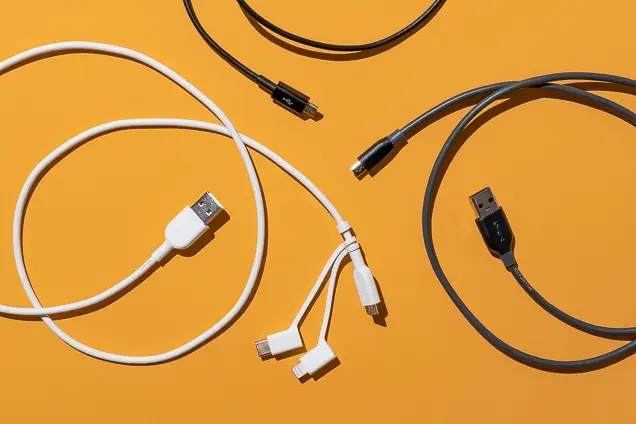In the fast-paced world of digital connectivity, the micro USB cable remains one of the most widely used types of cables for charging and data transfer. Even though newer technologies like USB-C are rapidly gaining ground, the micro USB cable is still used in millions of devices worldwide, including smartphones, tablets, cameras, and other portable electronics.
In this article, we’ll dive deep into what a micro USB cable is, how it works, its advantages, common uses, and how it compares to other cables. Whether you’re a tech enthusiast or just someone who wants to understand what cable to use, this guide is for you.
What is a Micro USB Cable?
A micro USB cable is a compact USB (Universal Serial Bus) interface developed primarily for connecting mobile and portable devices. It became widely adopted after its release in the mid-2000s and served as the standard for Android devices for many years.
There are several types of USB connectors, such as:
- USB Type-A (standard rectangular)
- USB Type-B (used in printers and scanners)
- USB Type-C (newer reversible design)
- Micro USB (small, thin design for mobile devices)
Micro USB connectors come in two main forms:
- Micro-A (less common)
- Micro-B (most widely used and what people refer to when they say “micro USB cable”)
Key Features of Micro USB Cables
Some of the defining features of a micro USB cable include:
- Compact Size: Smaller than a mini USB, making it ideal for small devices.
- 5-Pin Design: It includes a fifth pin (ID pin) for host and peripheral identification.
- Data Transfer: Supports data transfer between the device and a computer.
- Charging Capability: Used for power supply to recharge devices.
- Durability: Designed for multiple insertion and removal cycles.
Common Uses of a Micro USB Cable
Even though many modern devices are switching to USB-C, micro USB is still widely used in:
- Android Smartphones (older models)
- Power Banks
- Bluetooth Headphones
- Digital Cameras
- E-Readers
- MP3 Players
- Game Controllers
- Dash Cams
If you have any of these devices, chances are you have a micro USB cable lying around.
Micro USB vs USB-C vs Lightning
As technology evolves, it’s essential to understand how micro USB stands against other modern cables like USB-C and Apple’s Lightning.
Feature Micro USB Cable USB-C Cable Lightning Cable (Apple)
Connector Type One-sided Reversible Reversible
Data Transfer Speed Up to 480 Mbps (USB 2.0) Up to 10 Gbps (USB 3.1) Up to 480 Mbps
Power Delivery Limited Up to 100W Up to 20W (fast charge)
Common Usage : Older Android devices , New smartphones, laptops , Apple devices
While USB-C and Lightning offer more advanced capabilities, micro USB remains cost-effective and widely supported.
Advantages of Using a Micro USB Cable
Despite the rise of newer connectors, the micro USB cable offers several benefits:
1. Affordability
Micro USB cables are inexpensive and widely available, making them a cost-effective solution for charging and data needs.
2. Widespread Compatibility
From portable speakers to gamepads, many devices still support micro USB, which means you don’t have to upgrade everything at once.
3. Reliable Performance
Although not as fast as USB-C, micro USB cables still deliver consistent charging and data transfer for most everyday tasks.
4. Easy Replacement
If you lose or damage your cable, it’s easy to find a replacement due to its wide availability in stores and online.
Things to Consider When Buying a Micro USB Cable
When choosing a micro USB cable, it’s important to consider a few factors:
1. Cable Length
Short cables are ideal for desk use, while longer cables (6ft or 10ft) are great for charging across the room.
2. Build Quality
Look for cables with reinforced ends, braided nylon jackets, or other durability features to avoid wear and tear.
3. Charging Speed
Check if the cable supports fast charging (if your device and charger also support it).
4. Data Transfer Support
Not all cables support data transfer. If you need to sync files, make sure your cable provides both power and data.
How to Maintain Your Micro USB Cable
To extend the life of your cable:
- Avoid bending the cable excessively.
- Don’t pull the cable from the cord; unplug it from the connector.
- Keep it away from moisture or high heat.
- Use cable organizers to avoid tangling and wear.
Taking care of your micro USB cable ensures it serves you well for years.
Future of Micro USB Cables
The micro USB standard is gradually being phased out in favor of USB-C, especially in smartphones and laptops. However, many budget devices, accessories, and electronics will continue to use micro USB for years to come due to lower manufacturing costs.
Regulations like the EU’s common charging standard (favoring USB-C) may also influence the decline of micro USB in the long run.
Still, the micro USB cable remains relevant and useful, especially for users who rely on older or low-cost devices.
Conclusion
The micro USB cable has played a critical role in shaping the way we charge and connect our devices. While newer standards offer greater speed and power, micro USB remains a trusted, reliable, and cost-effective option for millions of users around the world.
Whether you’re charging an older phone, transferring files from your camera, or powering your Bluetooth speaker, the micro USB cable still holds value in today’s tech landscape.
So the next time you see that small connector with a trapezoidal shape, know that it’s the micro USB cable, a small tool with a big impact.



